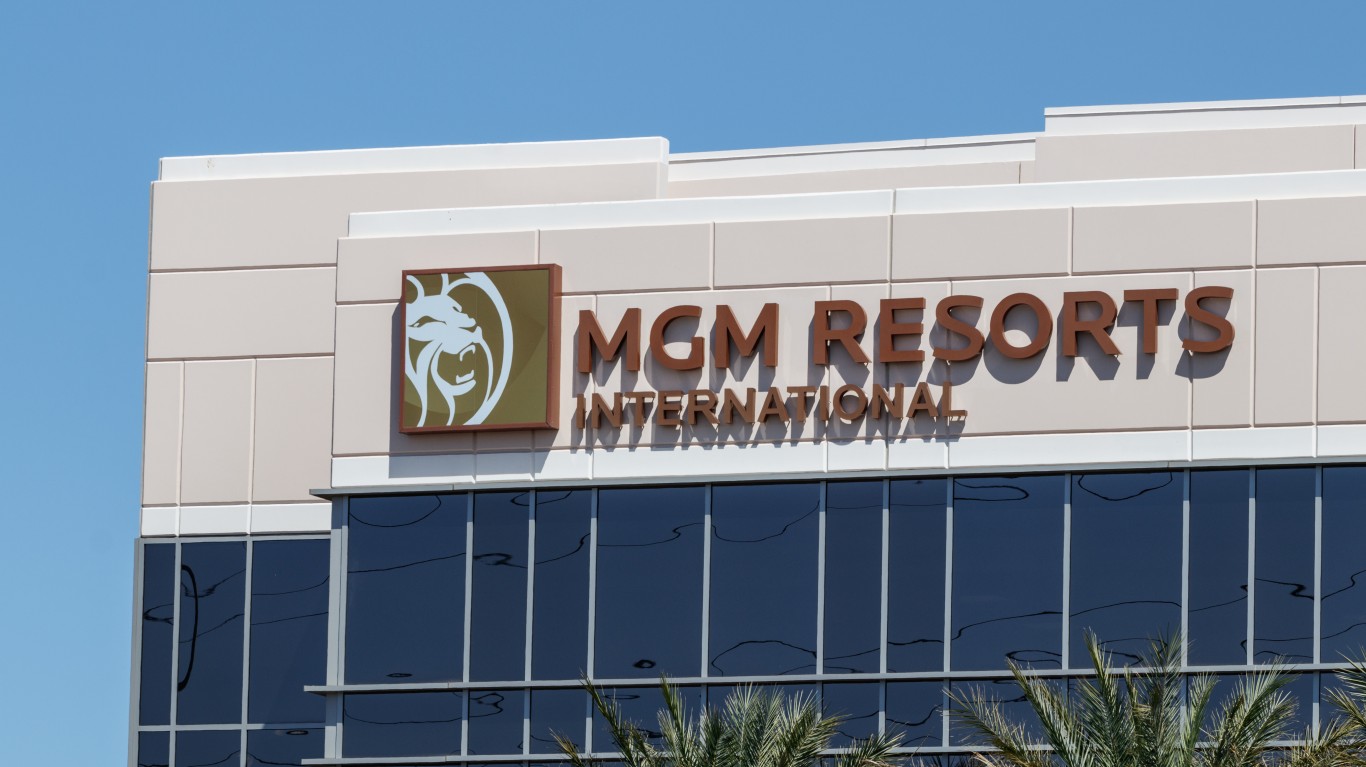
In early regular-session trading on Friday, the Dow Jones industrials were down 0.14%, the S&P 500 down 0.07% and the Nasdaq 0.31% lower.
After U.S. markets closed on Thursday, Amazon reported better-than-expected earnings per share (EPS) and revenue. Comments from CFO Brian Olsavsky related to slower growth and lower profitability in the company’s AWS cloud business brought an after-hours surge of around 12% to a screeching halt. Shares traded down about 3.5% Friday morning.
[in-text-ad]
First Solar missed consensus estimates on both the top and bottom lines. Revenue rose by nearly 50% year over year but came in about 24% below forecast growth. Shares traded down 12%.
Intel beat estimates on the top and bottom lines despite a year-over-year drop of 36% in revenue. The company expects to see margin improvement in the second half of the year. Shares traded up 7.3% Friday morning.
T-Mobile reported mixed results, beating the EPS estimate but missing on revenue. The company forecast higher 2023 growth in postpaid subscribers than its previous estimate and a 9% jump in adjusted EBITDA. Shares traded down 3.2%.
U.S. Steel solidly beat both top-line and bottom-line estimates. Shares traded down 2.8% Friday morning.
Before markets opened on Friday, Chevron reported that EPS and revenue for its first quarter came in above analysts’ consensus. Oil production was down 3% in the quarter, and capital spending rose 55%. Free cash flow fell by more than 30% year over year, largely due to the increase in capex. Shares traded down 0.4% early Friday.
Exxon Mobil had mixed results in the first quarter, beating the EPS estimate and missing on revenue. Net profit rose to an all-time (140-year) high of $11.4 billion. CFO Kathy Mikells attributed the positive surprise to a 40% combined increase in production from the Permian Basin and offshore Guyana. Shares traded up 1.9%.
Norwegian Cruise Line, ON Semiconductor and SoFi Technologies are on deck to report quarterly earnings before U.S. markets open on Monday.
Here are previews of three companies set to report results late on Monday.
MGM Resorts
Resort and casino operator MGM Resorts International (NYSE: MGM) has seen its share price increase by about 7.6% over the past 12 months. From a recent low in late December, the stock added about 40% before dipping trade about sideways with a gain of 33%.
The cards came up aces for MGM as its Las Vegas operations continue to see higher demand, the Macau property is making a comeback after the lockdowns in China, and MGM is getting close to breaking ground on the first casino in Japan, a $10 billion joint being developed with Japan’s ORIX Corp. MGM has a 40% stake in the project.
[in-text-ad]
Sentiment remains bullish on the stock, with 14 of 19 analysts having a Buy or Strong Buy rating and the rest rating it at Hold. At a recent price of around $43.40 a share, the upside potential based on a median price target of $55.50 is 27.9%. At the high price target of $68.00, the upside potential is 56.7%.
The consensus first-quarter revenue estimate is $3.61 billion, which would be up 0.5% sequentially and by 26.7% year over year. MGM is forecast to post EPS of $0.16, compared to a loss per share of $1.53 sequentially and EPS of $0.01 in the year-ago quarter. For the full year, analysts expect EPS of $0.83, much better than last year’s loss per share of $2.74, on sales of $14.77 billion, up 12.5%.
MGM shares trade at 52.1 times estimated 2023 earnings, 35.2 times estimated 2024 earnings of $1.23 and 24.7 times estimated 2025 earnings of $1.75 per share. The stock’s 52-week trading range is $26.41 to $46.23. MGM pays an annual dividend of $0.01 (yield of 0.02%), and total shareholder return for the past year was 7.58%.
NXP Semiconductors
Over the past 12 months, Netherlands-based NXP Semiconductors N.V. (NASDAQ: NXPI) has seen its share price slip by 5.6%, including a gain of more than 11% in the past six months.
Like other European tech companies, NXP has felt the pain of restrictions on business with China. Ten days ago, the EU Chips Act was approved. The legislation includes $47 billion aimed at making the playing field with China and the United States more level. NXP, which makes chips for the auto and 5G networking industries, makes nearly 40% of its total sales to Chinese manufacturers, who then export about half of the NXP imports back to Western customers.
Of 27 analysts covering the company, 14 have a Buy or Strong Buy rating and the rest rate the shares a Hold. At a price of around $161.00 a share, the upside potential based on a median price target of $197.50 is 22.7%. At the high price target of $240.00, the upside potential is 49.1%.
NXP’s first-quarter revenue is expected to come in at $3 billion, down 9.4% sequentially and by 4.5% year over year. Adjusted EPS are forecast at $3.02, down 19.1% sequentially and 10.4% lower year over year. For the full 2023 fiscal year, analysts anticipate EPS of $12.66, down 12%, on sales of $12.41 billion, up down 6%.
[in-text-ad]
The stock trades at 12.7 times expected 2023 EPS, 11.2 times estimated 2024 earnings of $14.35 and 9.8 times estimated 2025 earnings of $16.38 per share. The stock’s 52-week range is $132.08 to $198.28. NXP pays an annual dividend of $4.06 (yield of 2.45%). Total shareholder return for the past 12 months was negative 3.59%.
Transocean
Switzerland-based offshore drilling giant Transocean Ltd. (NYSE: RIG) has seen its share price rise by just over 50% in the past 12 months. Shares added 65% in 2022 and have added 27% so far in 2023.
The turmoil in the oil industry caused by the Russian invasion of Ukraine has benefited Transocean by reducing risks from project delays, better contract pricing and fewer cancellations. The company reported a drilling backlog of $8.54 billion in February. Board Chair Chad Deaton purchased 30,000 shares in early March at an average price of $7.40 per share. Last November, Deaton purchased $50,000 shares for an average price of around $4.07 per share.
Of the 14 brokerages covering Transocean, five have a Buy or Strong Buy rating and seven have Hold ratings. At a share price of around $5.80, the implied gain based on a median price target of $6.50 is 12.1%. At the high target of $12.00, the upside potential on the stock is 107%.
For the first quarter, analysts expect the company to report revenue of $646.29 million, up about 6.7% sequentially and 10.3% higher year over year. The expected loss per share is $0.22, better than the $0.49 per-share loss in the prior quarter, and better than the $0.28 per-share loss a year ago. For the full year, analysts expect a loss per share of $0.41 compared to the year-ago loss of $0.93 and sales of $3.02 billion, up 18.5% year over year.
Transocean shares trade at an enterprise value-to-sales multiple of 48.7 times expected 2023 EBIT, 17.7 times estimated 2024 EBIT and 15.6 times estimated 2025 EBIT. The stock’s 52-week range is $2.32 to $7.74. Transocean does not pay a dividend, and the total shareholder return for the past year was 50.39%.
Take Charge of Your Retirement In Just A Few Minutes (Sponsor)
Retirement planning doesn’t have to feel overwhelming. The key is finding expert guidance—and SmartAsset’s simple quiz makes it easier than ever for you to connect with a vetted financial advisor.
Here’s how it works:
- Answer a Few Simple Questions. Tell us a bit about your goals and preferences—it only takes a few minutes!
- Get Matched with Vetted Advisors Our smart tool matches you with up to three pre-screened, vetted advisors who serve your area and are held to a fiduciary standard to act in your best interests. Click here to begin
- Choose Your Fit Review their profiles, schedule an introductory call (or meet in person), and select the advisor who feel is right for you.
Why wait? Start building the retirement you’ve always dreamed of. Click here to get started today!
Thank you for reading! Have some feedback for us?
Contact the 24/7 Wall St. editorial team.





